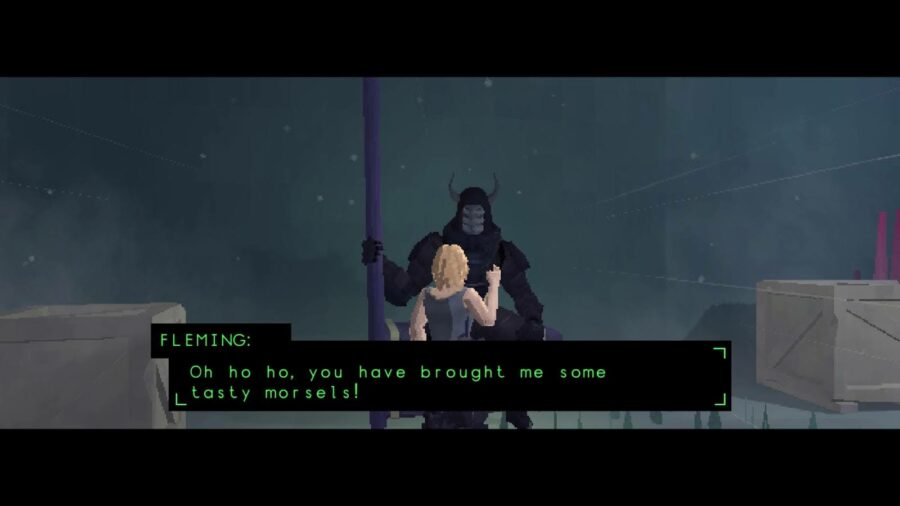“Over the centuries, mankind has tried many ways of combating the forces of evil,” the late Terry Pratchett wrote. “Prayer, fasting, good works, and so on. Up until Doom, no one seemed to have thought about the double-barrel shotgun.”
I was reminded of that quote while playing The Tower on the Borderland. It’s a story of lurking cosmic horror, where a procession of nightmares from beyond the veil of sleep all get their shit conclusively wrecked by one woman with an assault rifle. Take that, Lovecraft.
The Tower on the Borderland is a distinctly Eurojank horror game that’s now available on Steam. Playing it often feels like you’re trapped in somebody else’s hostile dream. It’s got a slow-burn atmosphere of dread that never lets up throughout its 4- to 6-hour running time.
The problem is that its reach exceeds its grasp. Tower is frequently buggy, feels distinctly underbaked, and has a number of features that don’t work reliably or well. You can see the shape of a better game underneath it, but as it is, Tower is strictly for horror fanatics.

A special forces unit has been dispatched to investigate a strange tower. Under protest, they’ve brought a rookie, Erin, along for the ride. Upon arrival, the other soldiers leave Erin in the lobby to set up a comms array.
Since the relay will work better if she gets some height, Erin gets in an elevator. At that point, she discovers that the higher you go in the tower, the further it takes you into an ethereal borderland between the waking and dreaming worlds. There are monsters here, and Erin’s squad will be no help at all.
Much of The Tower on the Borderland feels like it runs off of dream logic. You’re trapped in an elaborate maze of corridors, which alternate between old-fashioned offices and overgrown insect hives. The enemies are all rich with cheap symbology, like mealworms with vaguely human faces, naked zombies with clubs, or skeletal soldiers in full tactical armor. It’s not subtle, but it doesn’t have to be
(Incidentally, here’s your arachnophobia warning. If you don’t like spiders, Tower starts bad and gets worse.)

Like Crow Country, Tower uses the washed-out aesthetic of early PlayStation games for a deliberate purpose. Here, everything is always slowly materializing out of darkness or fog. This is a place that can’t decide what it is or why.
I think that’s why I’m not more annoyed about how difficult it is to navigate the tower. Everything often looks the same, but that gives the environments the same feel as those nightmares about being chased down an infinite corridor. Without the in-game map, I’d have been constantly lost.
That sense of disorientation is what gives Tower’s atmosphere most of its impact. As a survival horror game, it’s a little off-balance, primarily due to some mechanics it’s borrowed from Soulslikes.
Most of the tension in the classic survival horror formula comes from the player’s uncertainty about resources. Every bullet feels precious, so you never know if it’s worth fighting through any given encounter. Tower doesn’t do that. Instead, every save point automatically refills Erin’s health and supplies to their current maximum, while also bringing back most of the monsters in the tower.
That turns most of Tower into a relay race, where you try to get as far away from your latest save point as possible before you’re forced to turn back. Erin’s also equipped with a surprisingly powerful knife and a dodge move with a long invincibility window, so being low on ammunition often doesn’t matter. A few enemies are difficult to handle in melee range, but you can carve the rest up like Christmas hams.
That ends up doing some damage to the game’s overall atmosphere. It’s never less than creepy, but the kind of slow-build Lovecraftian horror it’s going for isn’t quite as effective when you’re actively styling on every monster you bother to fight. Other characters keep calling Erin the “rookie,” but the trail of bodies in her wake says otherwise.

You gradually find better weapons and gear as you progress, but the assault rifle is what really breaks the game. After that, it’s all over but the shouting. Only one fight gave me any real trouble once I had the rifle, and even then, it’s because that boss can somehow hit you straight through solid walls. I ended up beating him by glitching out his attack pattern, and I feel great about it.
That boss fight was the cherry on top of a procession of performance issues that accumulated over the time I spent with Tower. It’s not the most unstable game I’ve played on Steam, but it does give the impression of being held together with spit and baling wire. Enemy behavior is a particular sticking point, but Tower routinely has issues with collision detection, broken animations, and monsters clipping through the floor.
That’s layered on top of systems that work but don’t feel complete. There are a lot of little problems in Tower that drag down the whole, like a camera that frequently works against you, animations that don’t look finished, and how difficult it is to navigate the in-game map.

At the end of the day, I’d only recommend The Tower on the Borderlands to serious horror fans. It’s got great atmosphere and an interestingly weird story to tell, but plays like an alpha test that got released by mistake. I’d be interested in seeing what the same creator could do with more time and money, though.
[The Tower on the Borderland, published and developed by DascuMaru, is currently available on Steam for $15.99. This review was written using a Steam code sent to Hard Drive by the game’s developer.]



